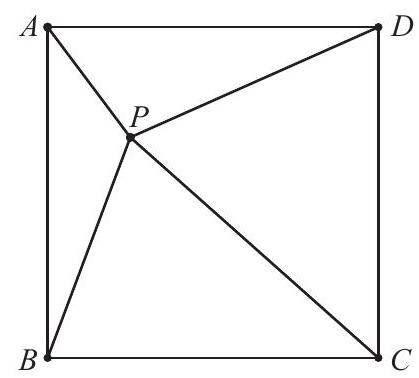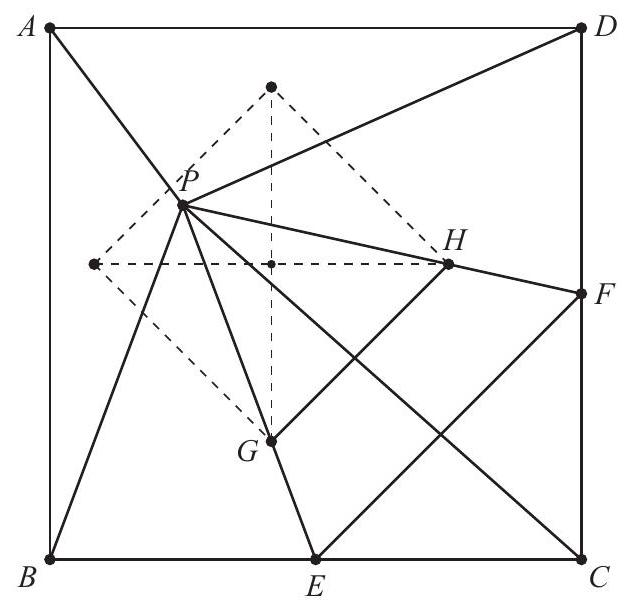¶ 2018 AMC 12B Problem 13
Problem:
Square has side length 30 . Point lies inside the square so that and . The centroids of , , and are the vertices of a convex quadrilateral. What is the area of that quadrilateral?

Answer Choices:
A.
B.
C.
D.
E.
Solution:
Let and be the midpoints of sides and , respectively. Let and be the centroids of and , respectively. Then is on , a median of , a distance of the way from to . Similarly, is on a distance of the way from to . Thus is parallel to and the length of . Because , it follows that , and . The midpoints of , and form a square, so the centroids of , and also form a square, and that square has side length . The requested area is .

OR
Place the figure in the coordinate plane with , , and . Then the coordinates of the centroids of the four triangles are found by averaging the coordinates of the vertices: , and . It can be seen that the quadrilateral formed by the centroids is a square with center and vertices aligned vertically and horizontally. Its area is half the product of the lengths of its diagonals, .
Note: As the solutions demonstrate, the inner quadrilateral is always a square, and its size is independent of the location of point . The location of the square within square does depend on the location of .
The problems on this page are the property of the MAA's American Mathematics Competitions